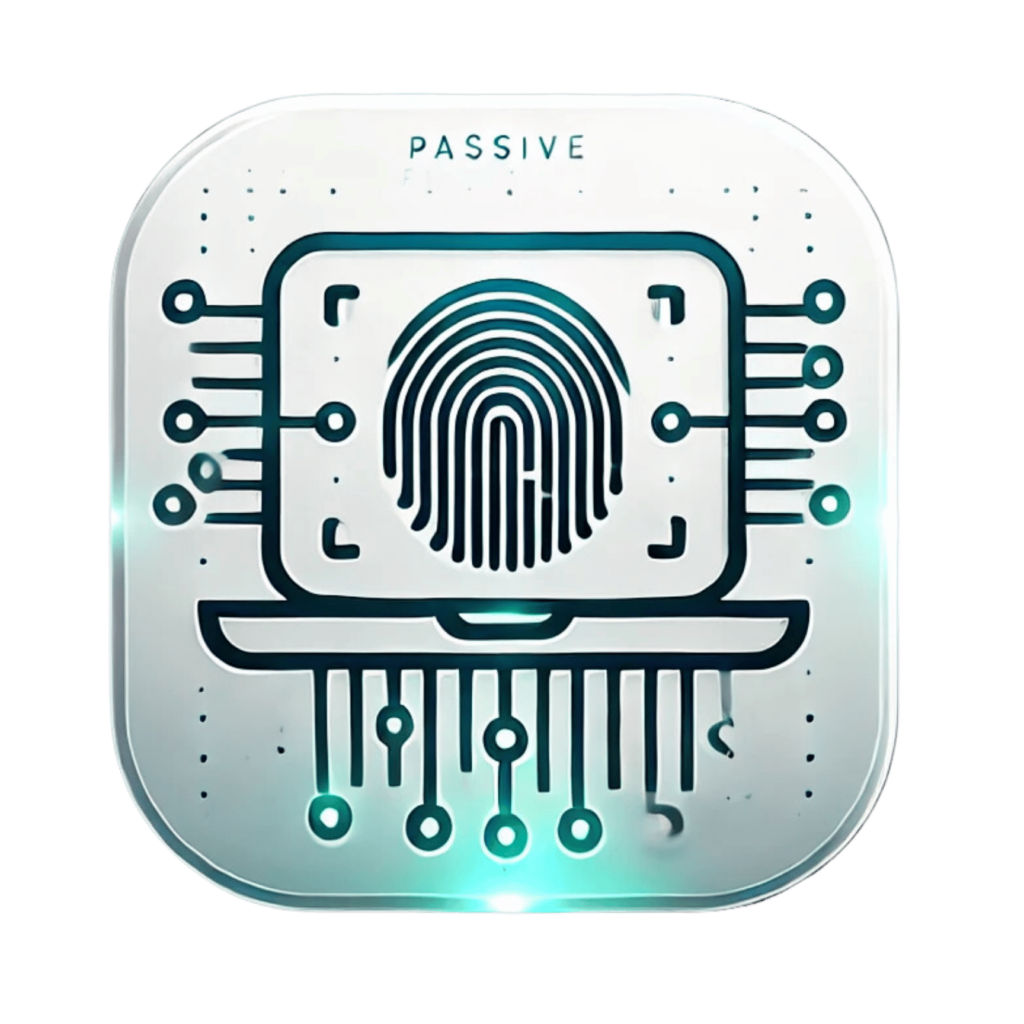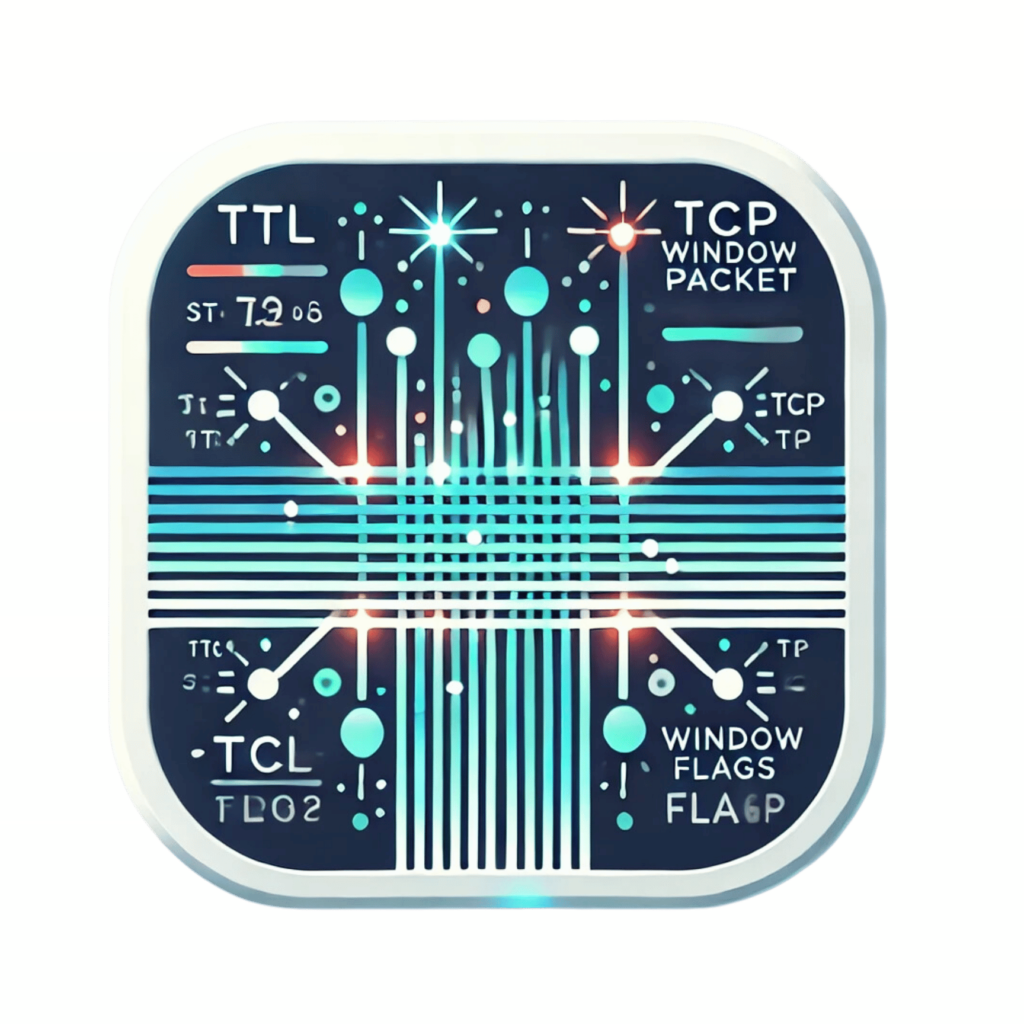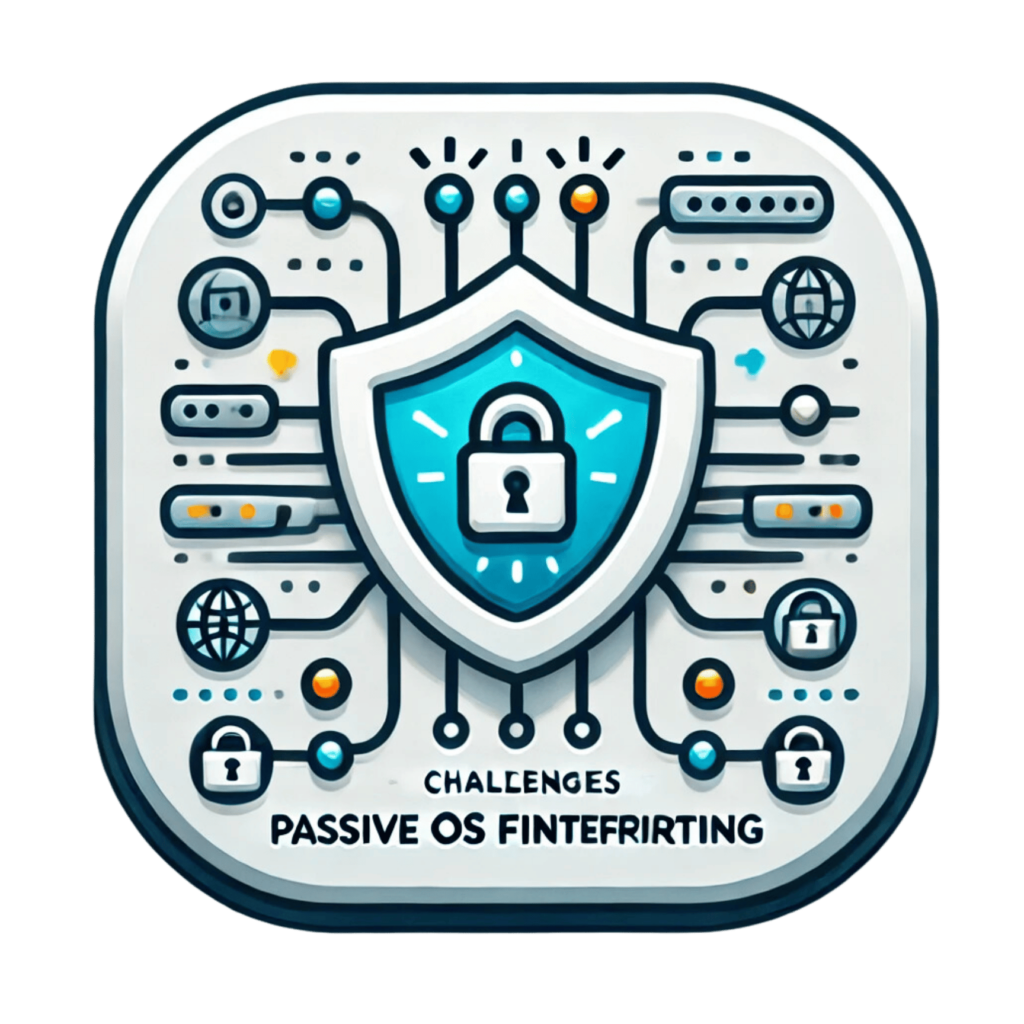Imagine identifying every device on your network—their operating systems, configurations, and vulnerabilities—all without ever touching a single one. No active scans, no warnings to the target devices, just pure, stealthy observation. That’s passive OS fingerprinting, and it’s redefining how organizations secure their networks.
But here’s the catch: as networks grow more complex and encryption becomes the norm, passive fingerprinting faces serious roadblocks. Enter proxies, the ultimate sidekick for modern cybersecurity. With tools like IPBurger’s rotating residential and mobile proxies, you can overcome these challenges, expanding your reach and maintaining invisibility while gathering critical data.
Why does this matter? Because unpatched or rogue devices aren’t just IT headaches—they’re open doors for cyberattacks. Recent studies show that outdated operating systems accounted for 60% of all data breaches in 2023.
In this blog, we’ll explore how passive OS fingerprinting works, the challenges it faces, and how proxies like IPBurger’s premium solutions amplify its effectiveness. Whether you’re an IT admin securing your network or a penetration tester gathering intel, this is your guide to mastering stealthy OS identification.
When it comes to cybersecurity, knowledge isn’t just power—it’s survival.

What is Passive OS Fingerprinting and Why Does It Matter?
Passive OS fingerprinting is like reading someone’s digital fingerprint without them ever knowing you’re there. By analyzing naturally occurring network traffic, this technique identifies the operating systems running on devices without sending any direct queries. It’s subtle, stealthy, and incredibly powerful.
How It Works
Every operating system handles network protocols, like TCP/IP, in unique ways. These nuances leave behind a distinct “signature” in packet attributes such as:
- Time-to-Live (TTL): A packet’s lifespan, which varies by OS.
- Window Size: TCP configurations unique to each OS.
- TCP Flags and Options: Specific combinations that indicate OS behavior.
By passively observing this traffic, tools like p0f and Satori can deduce not just the operating system but often its version, patch level, and uptime.
Stat Spotlight: Research published in Research Gate revealed that advanced passive OS fingerprinting techniques can achieve up to 99.4% accuracy, even in noisy network environments.
Why Passive OS Fingerprinting is Crucial
In the era of ever-expanding networks and increasing cyber threats, knowing what devices are on your network is non-negotiable. Passive OS fingerprinting provides:
- Real-Time Network Visibility: Identify all devices without actively probing them, which avoids detection or disruption.
- Rogue Device Detection: Spot unauthorized devices that could pose risks to your infrastructure.
- Patch Management: Quickly identify outdated systems that need updates to mitigate vulnerabilities.
How Proxies Enhance Passive OS Fingerprinting
Here’s where proxies, like IPBurger’s solutions, shine. By routing traffic through rotating, geographically diverse IPs, proxies expand the reach and accuracy of passive fingerprinting efforts. Key benefits include:
- Global Insights: Access data from multiple regions using IPBurger’s residential and mobile proxies.
- Invisibility: Stay undetected while monitoring traffic across networks.
- Bypassing Limitations: Analyze traffic from areas where direct observation isn’t feasible, thanks to IPBurger’s ethically sourced proxy networks.
Whether you’re managing an enterprise network or conducting penetration testing, passive OS fingerprinting combined with high-quality proxies is a game-changing strategy for modern cybersecurity. In the next section, we’ll explore specific use cases and how proxies unlock even more potential.

How Proxies Supercharge Passive OS Fingerprinting
Passive OS fingerprinting already offers incredible advantages, but its full potential is unleashed when combined with the right proxy infrastructure. Proxies provide access, anonymity, and scalability, making them a perfect pairing for stealthy OS detection. Let’s break down how IPBurger’s proxies elevate this critical cybersecurity technique.
1. Expanding Visibility Across Networks
The effectiveness of passive OS fingerprinting depends on analyzing diverse traffic. But what happens when network access is restricted or localized?
- Proxies Provide Global Reach: Using IPBurger’s rotating residential proxies, you can monitor traffic in regions that are otherwise inaccessible. For instance, an enterprise monitoring IoT devices in Europe can use IPs tied to European ISPs for local traffic analysis.
- Real-World Example: A multinational corporation identifies unpatched systems in its global branches using IPBurger proxies to observe traffic across multiple geographic regions.
Stat Spotlight: With over 100 million residential and mobile IPs in its pool, IPBurger provides the reach needed for effective passive fingerprinting on a global scale.
2. Enhancing Anonymity and Reducing Detection Risks
Traditional passive OS fingerprinting tools may face detection challenges in heavily monitored or restricted environments.
- How Proxies Help: By routing traffic through ethically sourced, real-world IPs, IPBurger proxies ensure that your fingerprinting activities remain undetected.
- Rotating IPs for Stealth: Dynamic IP rotation mimics authentic user behavior, avoiding flags from firewalls or monitoring systems.
Fun Fact: Platforms like IPBurger offer proxies with rotations as frequent as every 30 seconds, ensuring constant stealth while maintaining traffic accuracy.
3. Bypassing Encryption and Geographical Restrictions
Encryption protocols and geo-restrictions are major hurdles for passive OS fingerprinting. Proxies overcome these challenges by allowing you to analyze traffic that would otherwise be inaccessible.
- Decrypting the Problem: While fully encrypted packets (like HTTPS) remain a challenge, metadata in encrypted traffic can still reveal key OS traits when combined with proxy-based monitoring.
- Access Geo-Blocked Networks: IPBurger’s proxies enable you to target traffic from specific regions, bypassing local restrictions and firewall rules.
4. Use Cases That Combine Proxies and Passive Fingerprinting
- Enterprise Networks: Proxies allow IT teams to monitor distributed networks without deploying on-site tools, identifying vulnerabilities across global branches.
- Cybersecurity Research: Ethical hackers use proxies to analyze traffic in sandboxed environments, ensuring anonymity while mapping OS behaviors.
- Compliance Monitoring: With IPBurger’s proxies, organizations ensure regulatory compliance by auditing OSes without violating privacy laws.
Why IPBurger Proxies?
IPBurger’s proxies are tailor-made for passive OS fingerprinting tasks:
- Ethically Sourced IPs: No shady IPs, ensuring compliance and ethical practices.
- Scalability: From single-user setups to enterprise-grade operations, their proxies grow with your needs.
- Flexibility: Choose from residential, mobile, or dedicated proxies to suit your fingerprinting goals.
Takeaway: Proxies don’t just complement passive OS fingerprinting—they elevate it. By expanding access, improving stealth, and bypassing geographic and technical barriers, tools like IPBurger’s proxy solutions unlock the true potential of this critical cybersecurity technique.
Next, we’ll dive into specific tools that pair perfectly with proxy-powered OS fingerprinting.

Tools for Passive OS Fingerprinting and How Proxies Enhance Their Capabilities
Passive OS fingerprinting thrives on sophisticated tools that can analyze packet-level details and extract meaningful insights. When paired with proxies, these tools become even more versatile, enabling broader reach and greater stealth. Here’s a look at the best tools for passive OS fingerprinting and how IPBurger’s proxies amplify their effectiveness.
1. p0f: The Gold Standard in Passive Fingerprinting
What It Does: p0f analyzes TCP handshake packets (SYN, SYN-ACK, RST) to identify operating systems, network configurations, and NAT setups.
- Key Features:
- Lightweight and resource-efficient.
- Works silently without generating traffic.
- Detects OS uptime and NAT usage.
- How Proxies Enhance It: Pairing p0f with IPBurger’s rotating residential proxies enables analysis across different ISPs and geolocations, providing a more comprehensive picture of network activity.
Use Case: A cybersecurity firm uses p0f with IPBurger proxies to monitor devices in high-security networks while ensuring their activities remain undetected.
2. Zeek (formerly Bro): Advanced Network Analysis
What It Does: Zeek goes beyond OS detection, offering application-layer traffic analysis for security and monitoring.
- Key Features:
- Extracts metadata from encrypted traffic.
- Monitors large-scale networks.
- Customizable scripting for advanced use cases.
- How Proxies Enhance It: With IPBurger’s mobile proxies, Zeek can collect traffic from diverse network types, including LTE and 5G, simulating real-world user behavior.
Fun Fact: Mobile proxies are especially effective for analyzing IoT devices, which are often connected via cellular networks.
3. Satori: Enterprise-Grade Passive Fingerprinting
What It Does: Satori specializes in passive OS detection with a focus on real-time visualization and integration with SIEM platforms.
- Key Features:
- Visualizes device data for easier network mapping.
- Provides automated alerts for rogue devices.
- Supports encrypted traffic monitoring.
- How Proxies Enhance It: Satori gains unmatched accuracy when paired with IPBurger’s dedicated proxies, which allow persistent sessions for tracking long-term device behavior.
Stat Spotlight: Enterprises using tools like Satori reported a 25% improvement in identifying rogue devices when incorporating proxy networks for better traffic diversity.
4. Nmap with Passive Plugins: A Hybrid Approach
What It Does: While Nmap is primarily known for active scanning, its passive add-ons enable stealthy OS detection by analyzing observed traffic.
- Key Features:
- Combines active and passive methods.
- Detects operating systems, services, and open ports.
- How Proxies Enhance It: By routing requests through IPBurger’s proxies, Nmap users can balance active and passive techniques while avoiding detection or network blocks.
Comparison Table: Tools and Proxy Integration
| Tool | Strengths | Proxy Synergy |
| p0f | Lightweight, fast | Geographically diverse traffic analysis |
| Zeek | Advanced metadata extraction | Mobile proxies for cellular network analysis |
| Satori | Real-time alerts and SIEM sync | Dedicated proxies for persistent tracking |
| Nmap | Hybrid scanning capabilities | Proxy integration to bypass restrictions |
Choosing the Right Combination
The right tool-proxy combo depends on your goals:
- For stealth and lightweight operations, p0f + residential proxies is ideal.
- To monitor large-scale networks, Zeek + mobile proxies provides deeper insights.
- For enterprise-grade security, Satori + dedicated proxies offers long-term tracking and actionable alerts.
Takeaway: Combining top-tier fingerprinting tools with IPBurger’s premium proxies unlocks unprecedented capabilities for stealthy, efficient OS identification. Next, we’ll explore challenges in fingerprinting and how proxies overcome them.

Challenges in Passive OS Fingerprinting and How Proxies Solve Them
As powerful as passive OS fingerprinting is, it’s not without its hurdles. Encryption protocols, obfuscation techniques, and limited visibility can complicate efforts. However, these challenges can be mitigated with the right approach—and the right proxy infrastructure. Here’s a breakdown of the common obstacles and how IPBurger’s proxies provide effective solutions.
1. Encryption of Network Traffic
With over 80% of web traffic now encrypted using protocols like HTTPS and TLS, fingerprinting tools struggle to extract OS-level data from packet headers.
- The Proxy Solution: While encrypted payloads remain inaccessible, IPBurger’s proxies enable fingerprinting by routing traffic from diverse locations, allowing metadata like IP origin, packet timing, and connection protocols to fill in the gaps.
- Real-World Example: A cybersecurity team analyzing encrypted traffic uses IPBurger’s mobile proxies to gather metadata from regions with high encryption adoption, such as Europe.
2. OS Spoofing and Traffic Obfuscation
Some devices deliberately alter their network fingerprints to prevent identification, either for privacy reasons or malicious intent.
- The Proxy Solution: Frequent IP rotation through IPBurger’s residential proxies allows fingerprinting tools to observe multiple sessions, increasing the chances of detecting patterns or inconsistencies in spoofed traffic.
- Pro Tip: Use dynamic proxies with short session durations to analyze diverse packet samples and uncover hidden OS traits.
3. Limited Geographic Visibility
Networks restricted by geo-blocking or regional firewalls limit the effectiveness of passive fingerprinting tools.
- The Proxy Solution: IPBurger’s global proxy pool, covering over 195 countries, allows users to bypass regional restrictions and access traffic from virtually anywhere.
- Use Case: A penetration testing firm uses IPBurger proxies to simulate user traffic from Asia, gaining insights into local operating systems and network configurations.
4. Performance Bottlenecks in High-Traffic Networks
Large-scale networks with high volumes of traffic can overwhelm fingerprinting tools, leading to slower analysis or reduced accuracy.
- The Proxy Solution: IPBurger’s dedicated proxies provide exclusive, high-speed connections that reduce latency and ensure seamless analysis in high-traffic environments.
5. Compliance with Privacy Regulations
Fingerprinting tools must adhere to strict privacy regulations like GDPR or CCPA, which can limit direct monitoring of certain traffic.
- The Proxy Solution: IPBurger ensures compliance by offering ethically sourced IPs and adhering to transparent usage policies. Proxies enable lawful monitoring without violating privacy standards.
Why Proxies Are the Ultimate Problem-Solvers
With their ability to mimic real-world traffic, bypass geographic barriers, and maintain anonymity, proxies are indispensable for overcoming the inherent limitations of passive OS fingerprinting.
Key Takeaway: While challenges like encryption and obfuscation persist, IPBurger’s proxy solutions offer practical, scalable, and compliant methods to keep your fingerprinting efforts effective and reliable.
Next, we’ll wrap up with a call to action, highlighting why integrating proxies into your OS fingerprinting strategy is a must.
Why Proxies Are Essential for Passive OS Fingerprinting
Passive OS fingerprinting is a critical tool in modern network security, providing real-time insights into devices and their operating systems without disrupting operations. But in today’s complex, encrypted, and globally distributed networks, its effectiveness can be limited without the right support.
That’s where proxies come in. By routing traffic through dynamic, authentic IPs, proxies enhance fingerprinting in ways that standalone tools simply can’t:
- Global Reach: Access traffic from over 195 countries using IPBurger’s extensive proxy pool.
- Unmatched Stealth: Stay invisible with rotating residential or mobile proxies that mimic real user behavior.
- Compliance and Ethical Use: Adhere to strict privacy standards with IPBurger’s ethically sourced IPs and transparent policies.
Whether you’re a network admin securing an enterprise, a penetration tester gathering intel, or a cybersecurity researcher exploring emerging threats, integrating IPBurger’s proxies into your fingerprinting strategy is a game-changer.
Ready to take your passive OS fingerprinting to the next level?
With IPBurger’s premium proxy solutions, you’ll gain the tools and infrastructure needed to operate efficiently, effectively, and ethically. Explore IPBurger’s proxy options today and start optimizing your network security strategy.
Because in cybersecurity, the better you see, the stronger you stay.
FAQs
1. What is passive OS fingerprinting?
Passive OS fingerprinting is a technique used to identify a device’s operating system by analyzing its network traffic without directly interacting with it. It examines packet attributes like TTL, window size, and TCP flags to determine OS details. This method is stealthy and ideal for network monitoring and cybersecurity.
2. How do proxies enhance passive OS fingerprinting?
Proxies expand the reach and accuracy of passive OS fingerprinting by routing traffic through diverse and authentic IPs. Tools can analyze traffic from multiple locations, avoid detection, and bypass encryption barriers. IPBurger’s rotating residential and mobile proxies are especially effective, mimicking real-world behavior for stealthy, compliant monitoring.
3. What are the main challenges of passive OS fingerprinting, and how can they be overcome?
Challenges include encrypted traffic, OS spoofing, and limited visibility in geo-restricted regions. Proxies solve these issues by enabling access to global traffic, rotating IPs to uncover patterns, and analyzing metadata in encrypted environments. IPBurger’s ethically sourced proxies ensure compliance and seamless performance in overcoming these obstacles.



